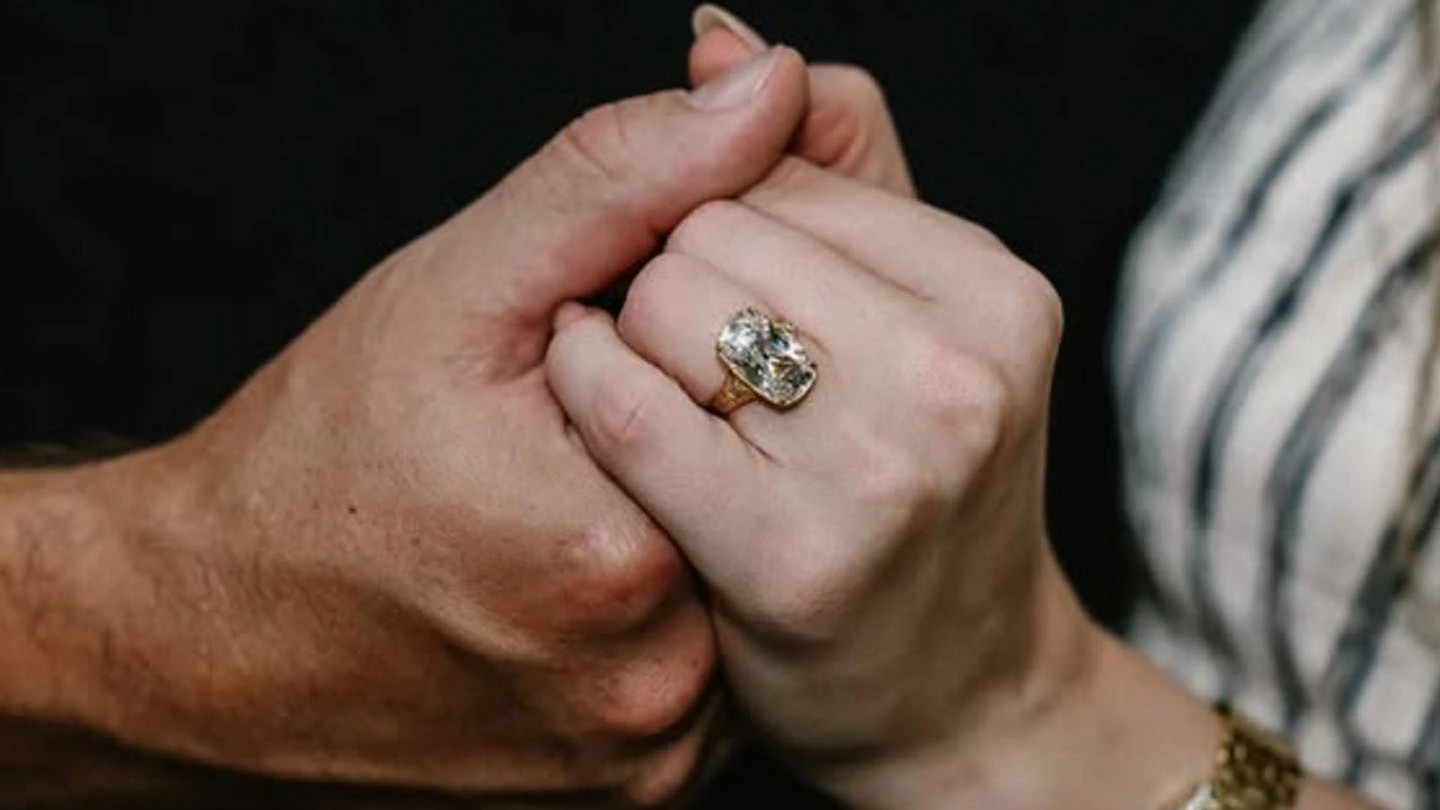From Taylor Swift @taylorswift
Travis Kelce proposed to Taylor Swift with what is believed to be an old mine cut diamond—an engagement ring that emanates vintage elegance and storybook-worthy style.
The old mine cut is a vintage diamond style that recalls an era when stones were measured by eye and shaped entirely by hand, designed to sparkle beautifully in candlelight.
Recognized for its soft, squarish shape and romantic charm, it’s an ideal choice for those seeking an engagement ring with antique or vintage appeal.
Read on to discover more about this historic cut.
What is an Old Mine Cut Diamond?
From the early 18th century to the late 19th century, the old mine cut was one of the most common diamond cuts—and the one you’ll most often find in Georgian (1714-1837) and Victorian era (1837-1901) jewelry.
It has 58 facets, like the modern round brilliant cut diamond, but the old mine cut stands apart with its soft, squarish shape and distinct diamond proportions. It typically features a smaller table, larger culet, higher crown and short lower half facets, and the girdle is often very thin in places—contributing to the old mine cut’s unique, vintage character.
Early diamond cutters—known today as bruters—shaped old mine cut diamonds by carefully following the octahedral form of the diamond crystal, grinding two diamonds together to achieve the desired shape. Afterward, a diamond polisher meticulously polished the facets. Because of the natural rough shape and the hand-crafted process, dimensions varied from stone to stone, making each old mine cut diamond truly unique.
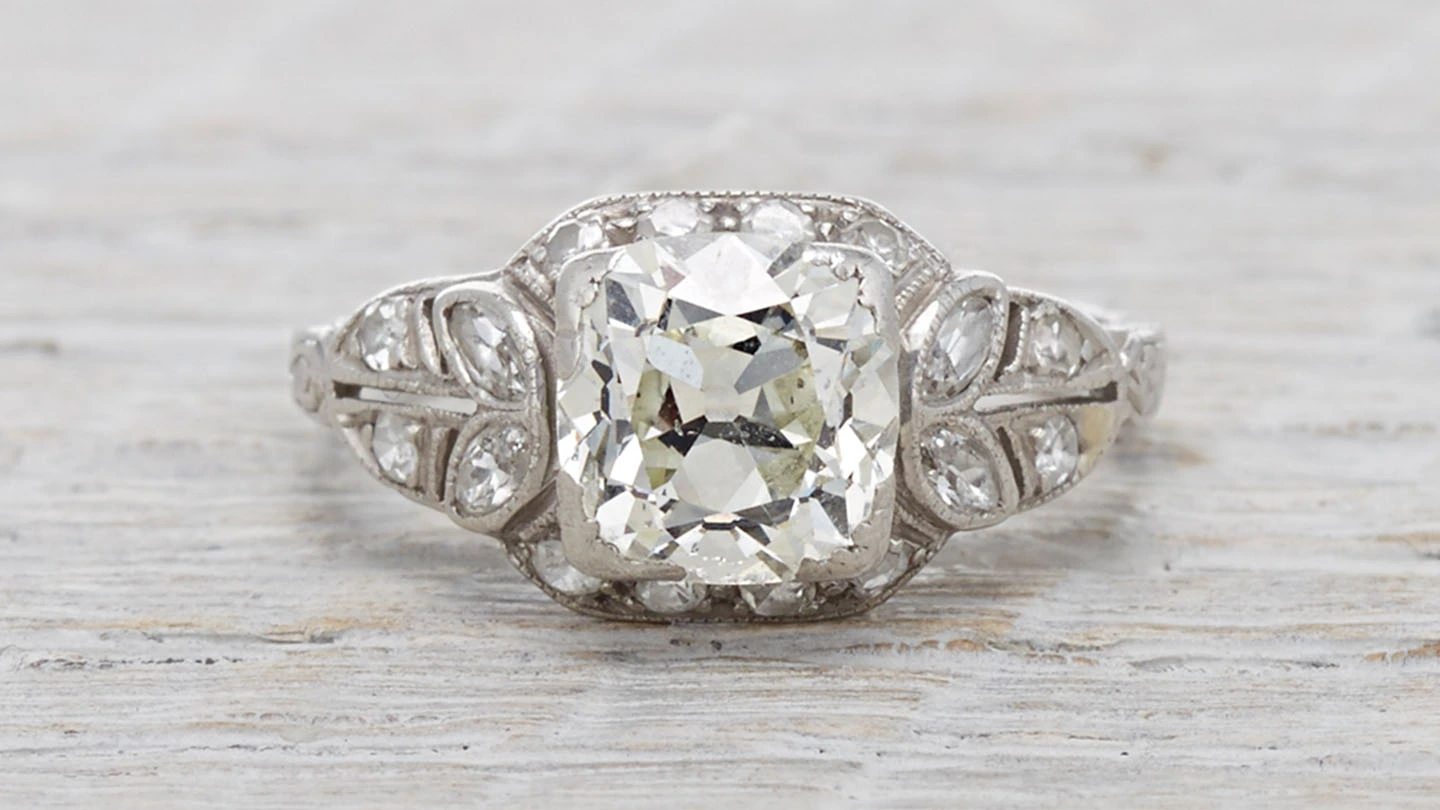
This Edwardian-era engagement ring features a 1.80-carat old mine cut diamond with I–J color and SI1 clarity.
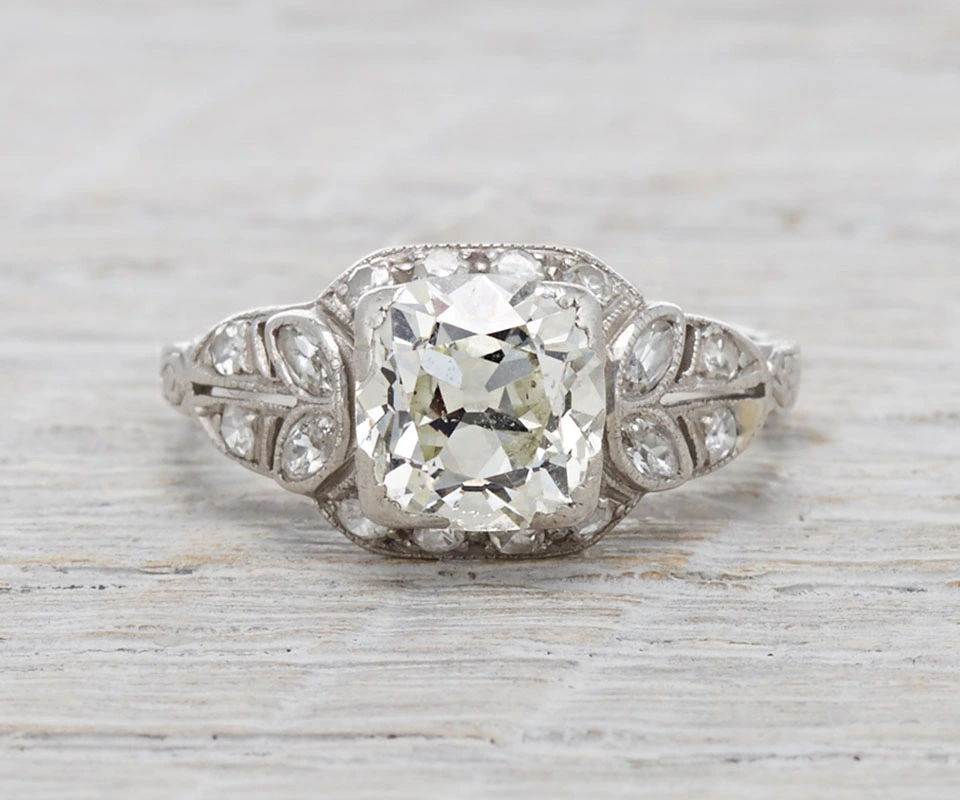
This Edwardian-era engagement ring features a 1.80-carat old mine cut diamond with I–J color and SI1 clarity.
What Does ‘Old Mine Cut’ Mean?
The term “old mine cut” has caused some confusion over the years, especially as its meaning has evolved. The term likely came into common use in the late 1800s, when diamond production from Africa began to eclipse production from the “old mines” of Brazil and even older mines of India.
The term “old mine cut” originally referred to any squarish, “brilliant” cut, colorless or near-colorless diamond from Brazil or India. As African mines began producing diamonds with higher color quality, the term evolved to describe diamonds with exceptional color and an older cutting style.
Eventually, “old mine cut” came to refer specifically to squarish-shaped diamonds with faceting patterns popularized in the early 1700s.
| Old Mine Cut | Old European Cut |
|---|---|
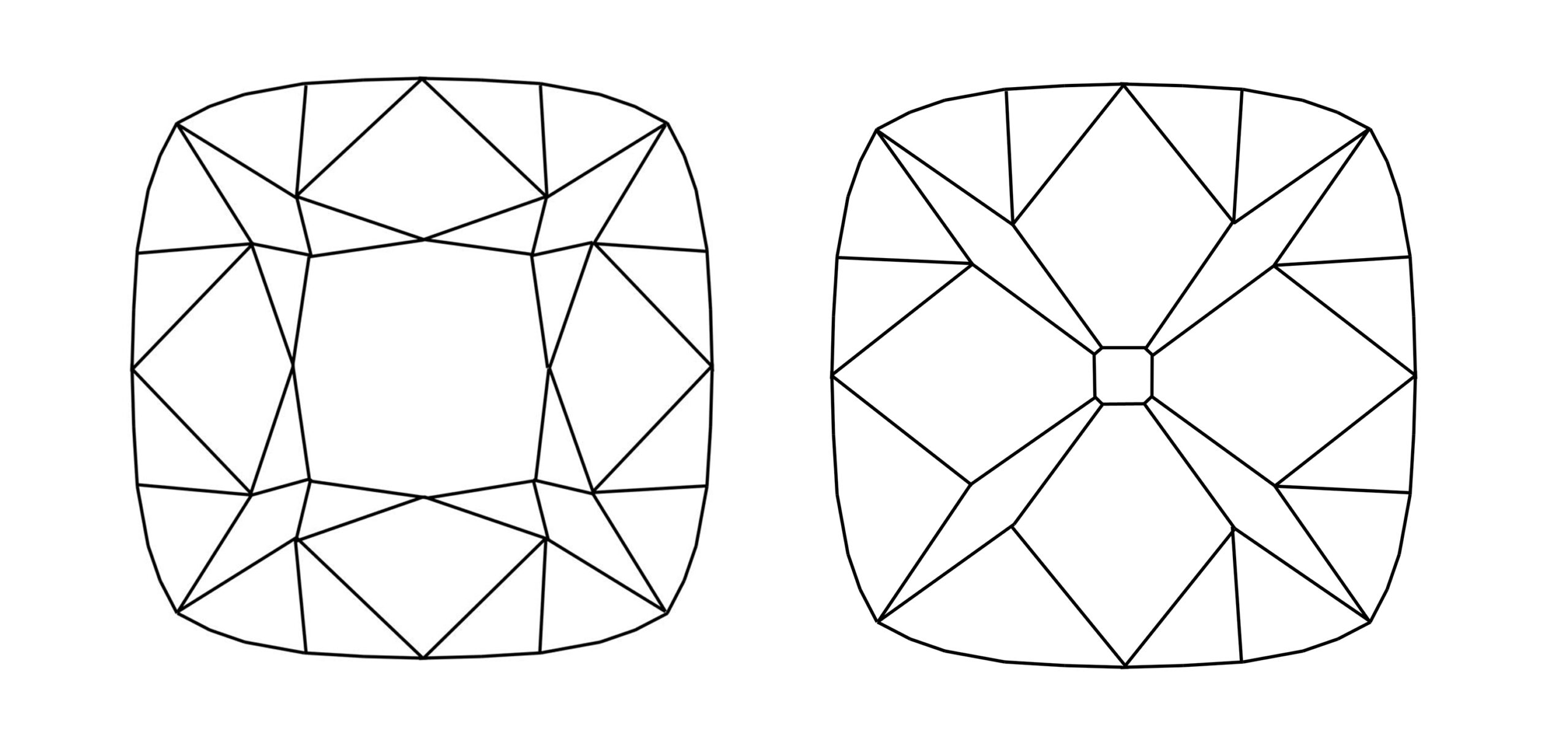 A plot diagram for the old mine cut shows that it has a squarish shape, a small table (left), and a large culet (right). |
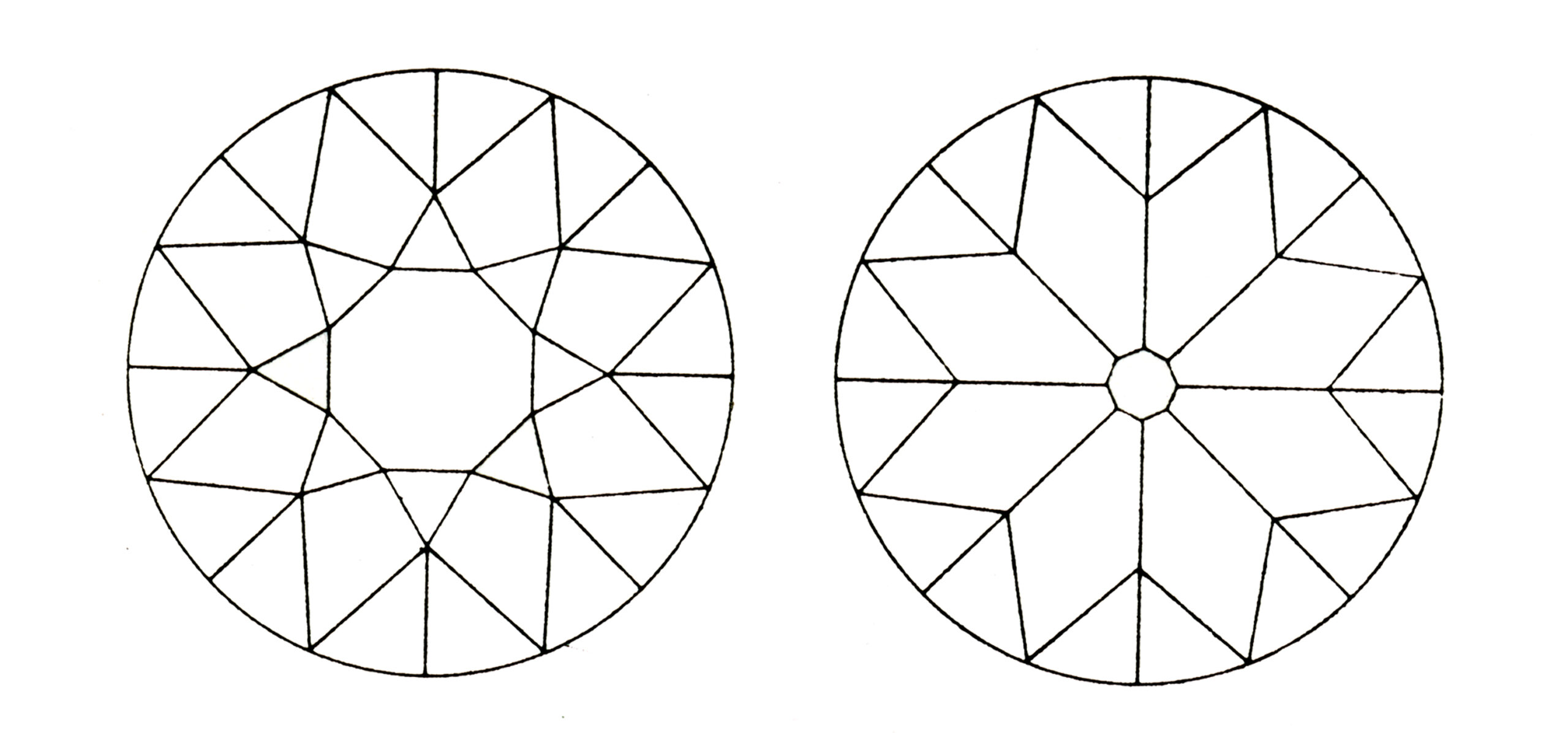 A plot diagram for the old European cut shows a round shape with a smaller culet (right) when compared to the old mine cut. |
Old Mine Cut vs. Old European Cut Diamonds: What’s the Difference?
If you’ve been searching for antique or vintage diamond jewelry from the late Victorian era, Edwardian era (1901–1915) or Art Deco period, chances are you’ve come across the round old European cut diamond, which is quite different from an old mine cut diamond.
Unlike the old mine cut’s soft squarish shape and larger culet, the old European cut is distinctly round with a smaller culet. A precursor to today’s round brilliant cut, the old European cut diamond features a round shape, a higher crown and greater total depth compared to the modern round brilliant. Like the old mine cut, its origins trace back to the early 1700s.
Transitional Cut
The transitional cut refers to a style of diamond cutting that bridges the gap between the old European cut and the modern round brilliant cut. It emerged in the late 1800s, when advances in cutting technology refined and standardized diamond shaping.
The invention of the bruting machine in 1873 mechanized the cutting process, giving diamond cutters much greater precision and control. This allowed for more perfectly round diamonds with improved symmetry and proportions that enhanced scintillation (sparkle).
The transitional cut marks an important step in the evolution toward the modern brilliant and is a term you’ll often encounter when shopping for vintage or antique jewelry.
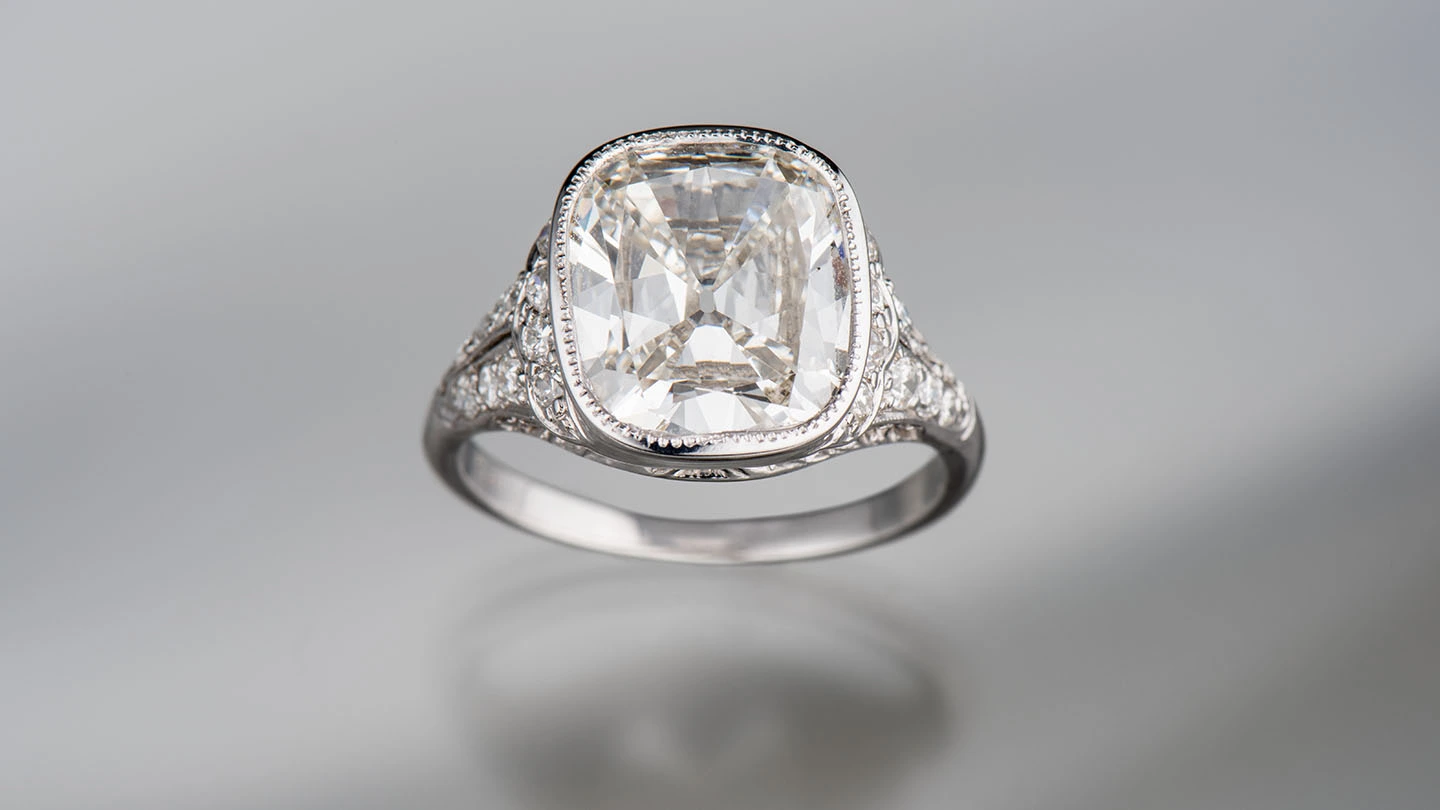
An exquisite example of Edwardian-era design, the ring features a 4.38-carat old mine cut diamond set in platinum, accented with delicate milgrain detailing.
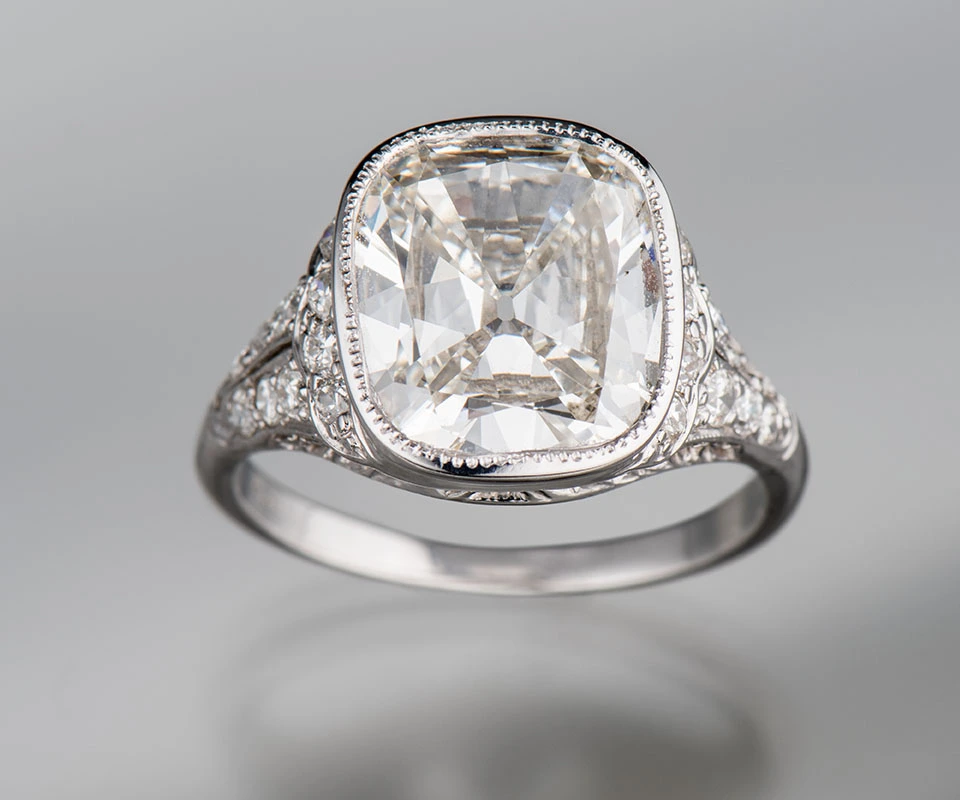
An exquisite example of Edwardian-era design, the ring features a 4.38-carat old mine cut diamond set in platinum, accented with delicate milgrain detailing.
What to Look for in an Old Mine Cut Diamond Engagement Ring
Thinking about choosing an old mine cut diamond for an engagement ring? Here are some things to keep in mind:
- Lighting: Be sure to view the diamond under different lighting conditions because lighting affects a diamond’s appearance.
- Larger Facets: Expect to see larger, chunkier facets and a softer, less defined contrast pattern compared to modern round brilliant diamonds.
- Less brilliance, more fire: These diamonds typically display less brilliance but more fire—the dispersion of light into spectral, rainbow-like colors—compared to modern round brilliant cuts. Their larger facets can produce bold, striking flashes of color, especially when viewed under spot lighting.
- Opt for a protective setting: Antique old mine cut diamonds often have exceptionally thin girdles, which can make them more vulnerable to damage. To prevent chipping, ensure the girdle is fully protected all the way around the stone with a secure setting. Read our post on diamond solitaire settings to learn how to keep your diamond safe.
Where to Buy Old Mine Cut Diamond Engagement Rings
If you’re looking for an engagement ring that’s out of the ordinary, the unique beauty of an old mine cut diamond is a great place to start. Since these diamonds were fashioned long ago, your best chance of finding an original old mine cut diamond is probably with a jeweler who sells antique jewelry.
The jeweler can help you locate an antique engagement ring, or possibly locate an unmounted old mine cut diamond, which you can then set into a mounting of your choice.
You might also consider a modern replica. With the rising popularity of vintage-style engagement rings, many diamond cutters are reviving old mine cuts. Old mine cuts fashioned in modern times have the added benefits of thicker, more durable girdles and improved cutting precision, resulting in greater symmetry and consistency.
Versatile and full of character, the old mine cut looks beautiful in a wide range of settings—whether paired with side stones or as a solitaire.
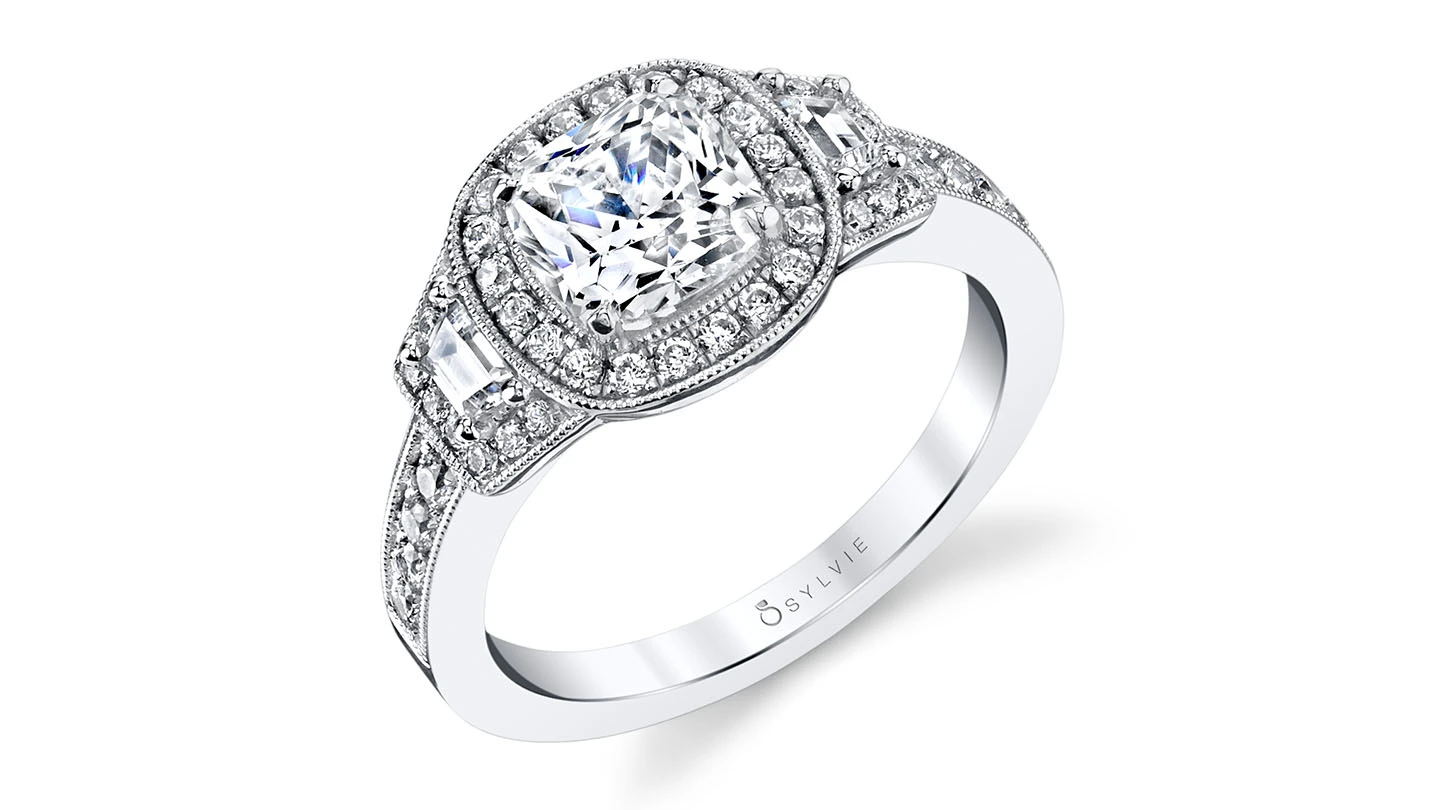
This contemporary ring showcases a 1.50-carat cushion cut diamond, accented by double halos, side stones, milgrain detailing and diamond melee along the band.
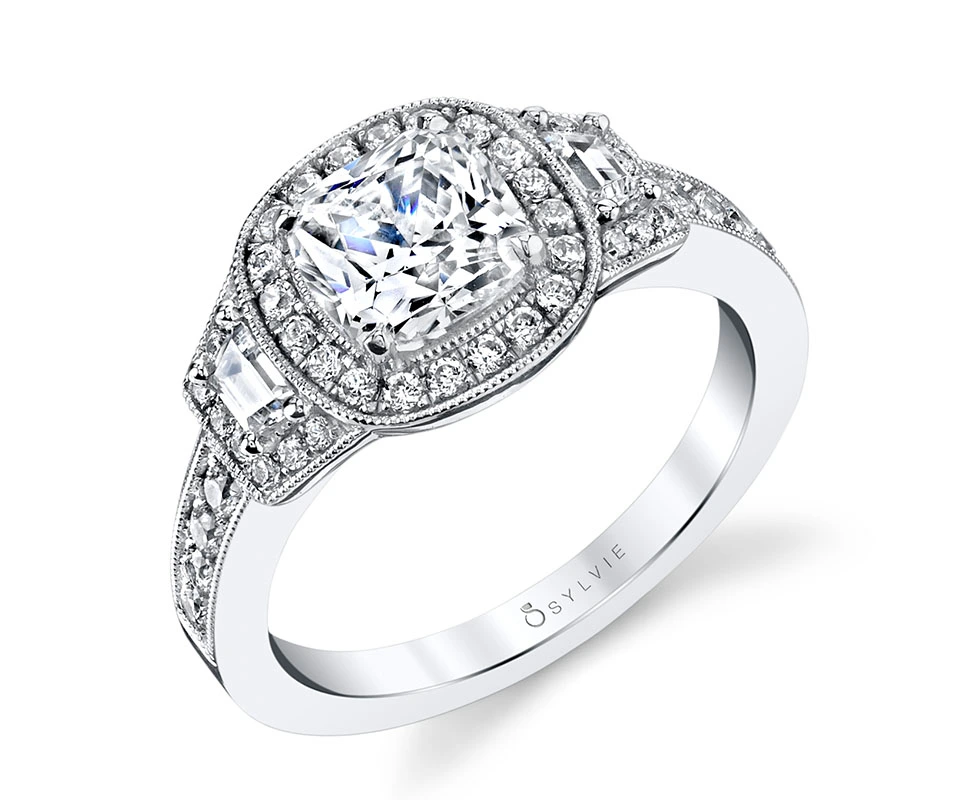
This contemporary ring showcases a 1.50-carat cushion cut diamond, accented by double halos, side stones, milgrain detailing and diamond melee along the band.
Cushion Cut Diamonds: A Modern Take on the Old Mine Cut
If you’re looking for a contemporary alternative to an old mine cut diamond, consider a cushion cut diamond. Inspired in part by old mine cuts, cushion cut diamonds feature a soft, squarish outline and brilliant-cut facets. They offer a modern take on vintage charm with enhanced brilliance and consistency.
Learn more about Cushion Cut Diamonds.
Explore More Vintage-style Diamond Shapes
Old mine cut diamonds bring built-in romance to engagement rings—they’re treasures from the past that symbolize a lifetime of love and commitment. It’s easy to see why so many fall in love with their character and elegance.
Looking to recreate a ring from a bygone era? Explore more Antique Engagement Rings for timeless inspiration.
